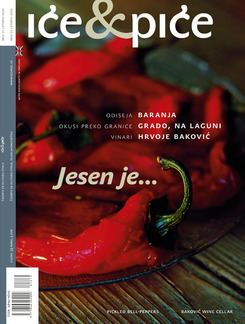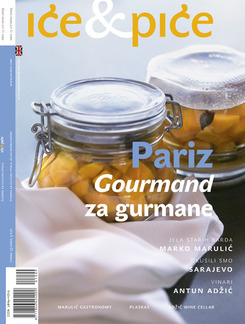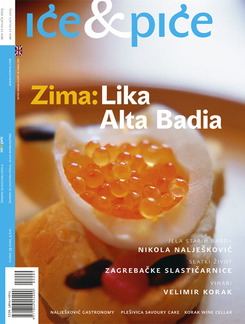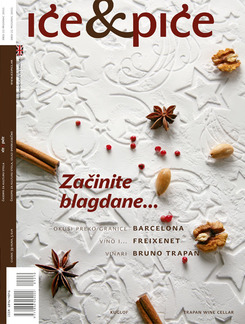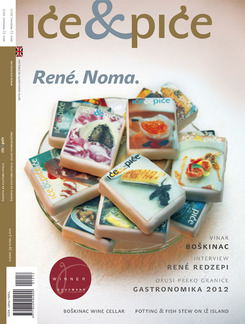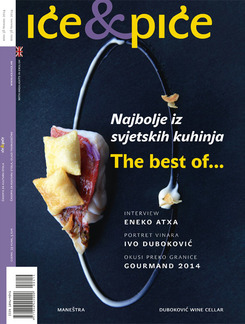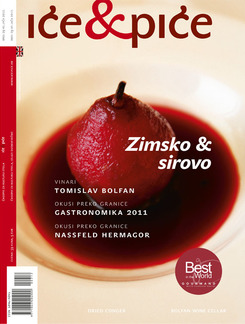A few years back, the Dubrovnik and Neretva County project for awarding marks of quality started. As a result, certain traditional products, that, with the exception of some meat products, have to be made of locally grown produce, were entitled to bear the mark Rural Dubrovnik Neretva Quality. In the select company of dried ham, cheese, dried figs and similar meridional treats appeared a confection little known outside the regional framework. Mantala, as well as broštulane mijendule, picturesque dialectal term for sugared almonds, represents the sweet life of the county. This antique confection made out of must has almost disappeared even from festive occasions, customs, the standard repertoire of domestic sweets, along with hib (pressed fig cake) and kinteks, kotonjata and kodonjata, all names for quince paste or quince cheese. Mantala and all other versions of boiled must (grape juice as used for fermentation) were prepared at the end of the vintage in all grape producing areas of the south Mediterranean. Mantala was a feature of the Mediterranean, known by various names, since ancient times. Roman cuisine knew it as mustaceum – a cake of must, cheese, butter and caraway seed – and also as mustace – a soft cake with must. For Apicius, the assumed author of the only extant Roman cookbook, the names mustei, mustacei meant a kind of bread roll of flour, milk and must. Similar cakes, with must as their main ingredient, are still prepared in Italy, mainly in Calabria and Oristano, where they are calledmostacciolo, mostazzolus, mustazzulu or nzudo. In Macedonia a paste prepared from must is called retselia while in Greece it is moustalevria and soutzukia and in Greece kofter. From the last name comes ćupter, meaning a boiled sweet in which other fruits can be added to the must. Fruit, according to Braudel, celebrated historian of the Mediterranean, always has to be looked at as a phenomenon of long duration, and accordingly this sweet without an ounce of sugar has to be looked at in this way. Mantala and other old world candies when there was no sugar to be used are woven into the food culture, linking the Mediterranean into the same cultural landscape.
Always familiar, never the same
Recipes for mantala and similar delights differ from region to region and also according to the occasions in which they are on festive and hospitable boards. While in the rest of Croatia sweets of must are prepared in just a few families, in Konavle the tradition has lasted longer than anywhere else. In the once impoverished extreme south, in which the presence of the magnificent Dubrovnik did not necessarily mean riches for the rural population, mantala was one of just a few sweets with which at holiday times a change was made to the everyday. In Konavle, Dubrovnik, Korčula and Pelješac, mantala was made at Hallowmas (November 1), and appeared not only as dessert at the end of a major dinner but also as part of the customs related to this holyday. On Pelješac it was the custom that on the Day of the Dead the children would get together and go round the village from door to door, just like little maskers on the mainland, where they would be greeted with fruit, walnuts and mantala. Mantala also featured in nuptial customs, when the bride on the first New Year after her wedding would give it to her bridesmaid, and according to some authors mantala was a wedding cake in ancient Rome as well. The connection between mantala and similar cakes and love can be found in wedding customs in Calabria, where mostacciolo or nzudo was a symbolic betrothal gift. Such cakes were sold at fetes for patron saints, given to children and offered to guests. Here, always with a glass of home-made grappa.
Mantala is a complex affair. It is prepared at the time when summertime is bottled and canned, and like every preserve, it’s the outcome of a long-lasting process. The first, rather lengthy phase of preparation of mantala is the boiling of the must. Today it can last up to ten hours, and previously, when ranges burned wood, even longer. Dried orange peel might be added, a few quinces and carob pods. While the must is reduced to a third, grape molasses is produced. Another treat of the ancient world. This is then strained and left for afterwards, when you don’t only have to make mantala from it, but flavour other sweet and savoury dishes. Thick reduced must is cooked again, just twenty minutes. You add a few ground cloves, flour or semolina and finely ground almonds. It’s done when the wooden spoon stands up straight in the pot. The mixture is poured into moulds, scattered with ground cinnamon and left to dry until Christmas.
And because it is almost impossible for most people to make it at home, I am very glad it lives on its tourist, souvenir life in the extreme south of Croatia, in Konavle. I am wholeheartedly in favour of this development project for absurd souvenirs. Absurd because they are not made to last like other mementos from the journey, but to prompt and preserve domestic production. Never mind that it won’t last long enough to grace the shelf and long, long recall the south. Cheese, prosciutto, dried figs, broštulani mijenduli, candied orange peel, dried figs and mantala as memento. Who could resist them?
Mantala at the Slovaks and the taste of Christmas
So there should be no confusion, we are thinking of the family called Slovak; in Komaji, by Ćilipi, seventy-four year old Mare Slovak makes mantala in the time-honoured way.
Mantala is a traditional Christmas Konavle sweet of must and here, in Konavle, its been made almost 300 years. It’s kept for Christmas, put away till then, and that’s the right time for eating it. Although it can last for up to a year, it’s not the same quality later. Not every house made mantala, because the men preferred to have more wine. So quite a lot of the womenfolk on the sly took must without them knowing, and cooked it, often secretly, at night, while they were sleeping. The must has to be cooked before it starts fermenting, else it’s no good. I don’t add sugar, because the grapes are sweet enough. Mantala is not made everywhere like once upon a time, just in the odd house. Before, there were no other cakes, and so we really looked forward to Christmas when we could eat mantala, especially the children.
Her son Jozo explains. The surname Slovak is from my grandfather, given to him by the Kukuljans, the neighbours, who brought him up. He was a Slovak or Czech by origin (130 years ago). They gave him this house, where we receive our guests today and offer them our homemade specialities. In the vineyard we have about 360 vines of Plavac and Kadarun (for wine and mantala) and Maraština (which we use to make Prošek, the heavy dessert wine).
Although we tried fresh (fantastic) mantala, we shall leave a piece for Christams. In honour of our hosts and the tradition. (D.F)
